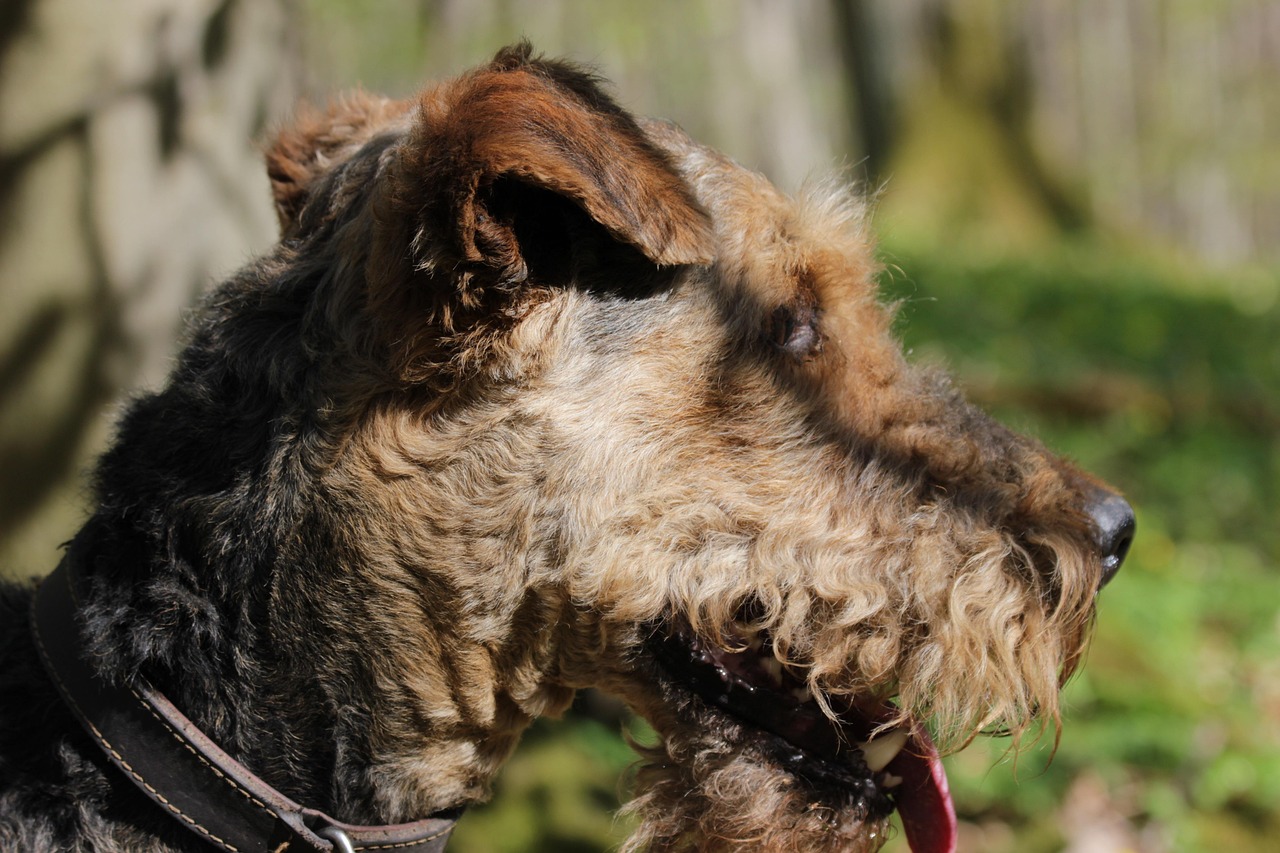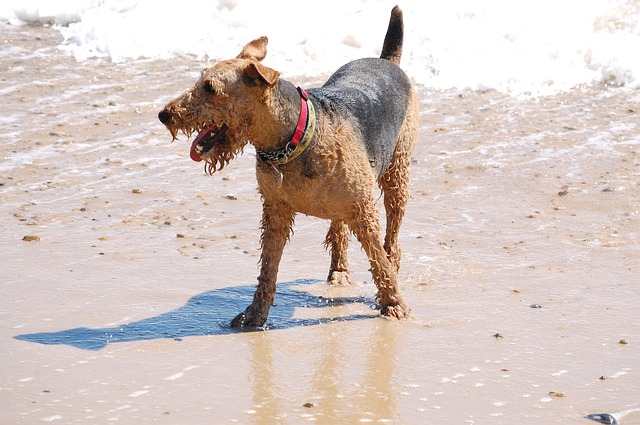Can Airedale Terriers Be Left Alone?

Airedale Terriers, renowned for their intelligence and friendly demeanor, often become cherished family members. However, as with any breed, potential owners may wonder about their ability to cope with alone time. In this blog post, we’ll explore whether Airedale Terriers can be left alone, how to prepare them for those times, and expert opinions on ensuring their well-being.
Understanding the Airedale Terrier
Before diving into how well Airedale Terriers can handle being left alone, it’s essential to understand their personality traits.
Characteristics of Airedale Terriers
- Intelligence: Airedales are among the most intelligent dog breeds, making them easy to train. Their cleverness can lead to problem-solving skills that might prompt them to find ways to entertain themselves when left alone.
- Affectionate Nature: These dogs are known for their loyal and affectionate demeanor. They thrive on human interaction and companionship, which means they may struggle with feelings of separation anxiety when left alone.
- High Energy Levels: As an active breed, Airedales require significant physical and mental stimulation. Without enough exercise or engagement, they may exhibit restlessness or develop destructive behaviors.
Can Airedale Terriers Be Left Alone?
Generally, Airedale Terriers can tolerate being left alone, but the extent varies from dog to dog. Factors influencing their ability to cope with separation include age, individual temperament, training history, and the amount of physical and mental stimulation they receive.
Factors That Influence Their Ability to Be Left Alone
- Age: Puppies, adolescents, and senior dogs each have different needs and tolerances for being alone. Young puppies, for instance, require frequent potty breaks and socialization, while older dogs may have established routines that allow them to be left alone for longer periods.
- Training: A well-trained Airedale is more likely to handle being alone. Crate training, for example, can provide a safe space where they feel secure when left unsupervised.
- Socialization: Airedales that have been properly socialized are more adaptable. Early exposure to different environments, sounds, and people can help them feel more at ease being alone.
- Exercise Needs: Airedale Terriers require regular exercise and mental stimulation. If they are left alone without adequate physical activity beforehand, they can become bored and anxious.
Expert Opinions on Leaving Airedale Terriers Alone
According to Dr. Jane Smith, a canine behavior specialist, “Airedale Terriers are social creatures who thrive on companionship. While they can be left alone for a few hours, it’s essential to ensure they have engaged in enough physical activity beforehand.”
Dog trainer Mark Johnson adds, “Training plays a significant role in how well Airedales cope with being alone. Gradual desensitization to absence can help ease their anxiety.”
Signs of Separation Anxiety in Airedale Terriers
Understanding your Airedale’s behavior is crucial for assessing their comfort with alone time. Here are some common signs that may indicate separation anxiety:
- Excessive Barking or Howling: If your Airedale vocalizes significantly when left alone, it may be a sign of distress.
- Destructive Behavior: Chewing furniture, digging, or scratching at doors can indicate a dog is trying to cope with its anxiety.
- Pacing: If you notice your Airedale walking in circles or back and forth, it could show they are feeling anxious.
- House Soiling: Even well-trained dogs may have accidents when experiencing anxiety, especially if they are left alone for extended periods.
- Withdrawal: Some dogs may hide or isolate themselves when they’re feeling anxious, which is also a sign that they may need more attention and support.
Preparing Your Airedale for Alone Time
If you anticipate needing to leave your Airedale alone, you can take several steps to ease their separation anxiety and help them feel more comfortable.
1. Gradual Acclimatization
Start by leaving your Airedale alone for short periods and gradually increasing the duration. This will help them adjust to the idea that you will always return.
2. Create a Comfortable Space
Establish a designated area where your Airedale feels secure when left alone. A cozy bed, toys, and access to fresh water can help make the space inviting.
3. Mental Stimulation
Provide your Airedale with interactive toys or puzzles to keep their mind engaged while you are away. Toys filled with treats can also offer a reward for good behavior when they are alone.
4. Exercise Before Leaving
Ensure your Airedale has had enough exercise before you leave. A long walk or play session can help tire them out and reduce anxiety.
5. Use Positive Reinforcement
Reward your Airedale with treats and praise when they show calm behavior during your departures and arrivals.
Tips for Leaving Your Airedale Alone Safely
- Desensitization: Practice leaving and returning home without making a fuss. This helps normalize the experience for your Airedale.
- Keep Departures and Arrivals Low-Key: Avoid long goodbyes or overly excited greetings to prevent increasing your dog’s anxiety.
- Calm Environment: Consider playing calming music or leaving the television on to provide background noise.
- Establish a Routine: Dogs thrive on routine. Establishing consistent times for leaving and returning helps Airedales feel more secure.
- Hire a Dog Sitter or Walker: If you are gone for long periods, consider hiring a professional pet sitter or dog walker to provide companionship and exercise.
When to Seek Professional Help
If you notice persistent signs of separation anxiety in your Airedale despite these strategies, it may be time to consult a professional. This could include a certified dog trainer or a veterinarian who can assess your dog’s behavior and recommend further actions.
Training Approaches
- Behavior Modification Programs: Reading behavioral assessments and modifying your dog’s environment and interactions can alleviate anxiety-driven behaviors.
- Medication: In severe cases, veterinary-recommended medication may help manage anxiety levels while you work on training strategies.
Conclusion
While Airedale Terriers may struggle with being left alone due to their affectionate and social nature, it’s possible to help them adapt. Through gradual acclimatization, ample exercise, and engaging distractions, you can increase the chances that your Airedale will feel comfortable when you need to be away.
As you prepare for those moments apart, remember to be patient and understanding. Every dog is unique, and with your support, your Airedale can thrive as a well-adjusted member of your family, even in your absence.
Expert Opinions Recap:
- Dr. Jane Smith emphasizes the need for adequate exercise.
- Mark Johnson highlights the importance of training to reduce anxiety.
By focusing on their needs and providing the right tools, you can foster a happier and more confident Airedale Terrier, prepared to handle those inevitable moments of separation.
With the right preparation and understanding, you can ensure that your Airedale is not only a beloved companion but also a happy and well-adjusted member of your family, even when you need to be apart.





